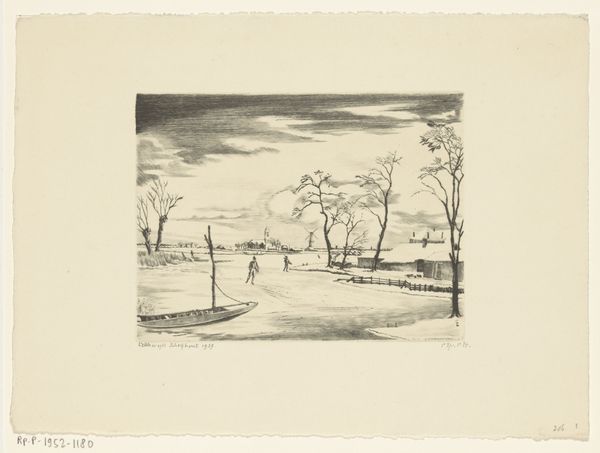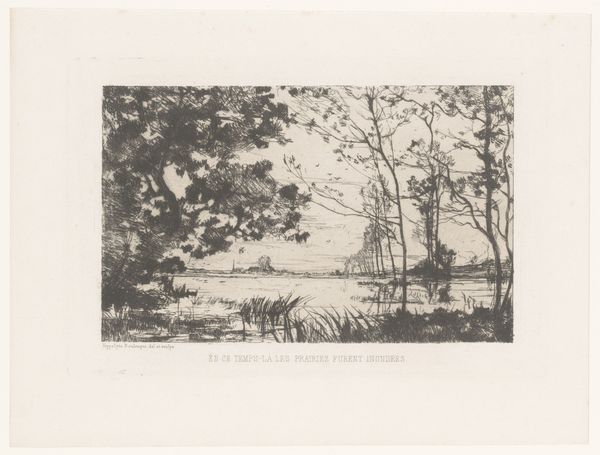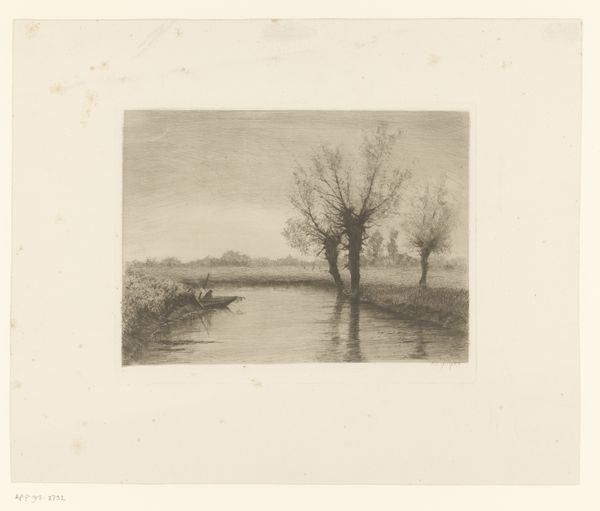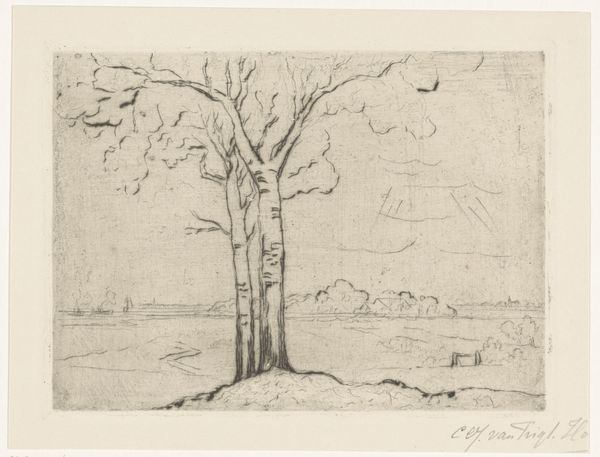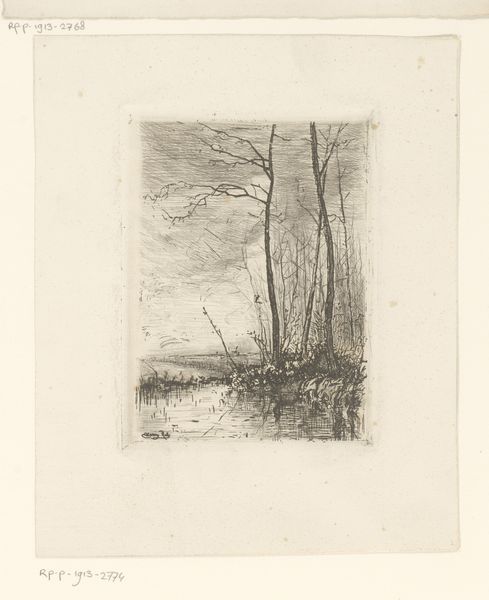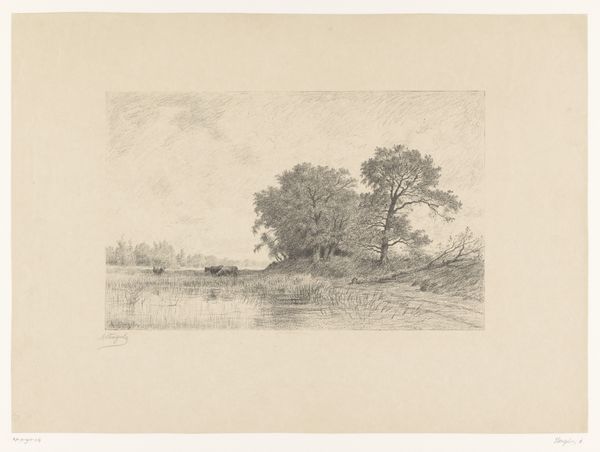
print, etching
# print
#
etching
#
landscape
#
etching
#
modernism
#
realism
Dimensions: height 118 mm, width 159 mm
Copyright: Rijks Museum: Open Domain
Curator: This is Lodewijk Schelfhout's "Winter Landscape near Amstelveen" from 1940. It's currently held in the Rijksmuseum's collection. Editor: Strikingly bleak. The somber palette really sets a tone of desolation, wouldn't you agree? The leafless trees, the overturned boat... it suggests abandonment and the harshness of winter. Curator: The technique enhances that feeling. This is an etching, which by its very nature involves a laborious process of scratching into a metal plate. Think of the manual labor involved in creating such a detailed scene using acid and metal! The final print is an indirect record of that work. Editor: Precisely. It evokes the Dutch landscape under the pressures of the war. I see those houses in the distance – a symbol of community, yet isolated in this vast, monochrome expanse. The boat—overturned, rendered useless—could symbolize a disruption of the social order. Curator: It’s tempting to see it that way, given the period. Etching was, in some ways, more accessible than painting—consider the materials involved: the metal, the acid, the press. Its very production offered artists a specific way of engaging with landscape subject matter, and its resulting affordability allowed it to reach broader audiences. Editor: I read the overall starkness through a lens of collective trauma, where traditional communal structures were breaking down, reflected in the desolate scene and its lack of human figures. Curator: It’s important to also acknowledge the tradition Schelfhout was working within—the Dutch landscape tradition—which, though frequently bucolic, often addressed the ever-present impact of water management. Consider that the making of land, as a material practice, has been key to Dutch identity for centuries. The scene captures a reality both natural and man-made, if you will. Editor: Yes, and perhaps there's also a muted resistance present. A refusal to completely succumb to despair amidst occupation. These rural scenes quietly capture a rootedness, a connection to the land itself, which speaks volumes. Curator: True. It shows the interconnectedness of human endeavor, environmental constraints, and material production inherent to art-making in this time and place. Editor: This image asks us to reconsider how seemingly straightforward landscapes can carry the weight of complex sociopolitical narratives. Curator: And it encourages us to remember the hands and the labor involved in translating lived experience into art.
Comments
No comments
Be the first to comment and join the conversation on the ultimate creative platform.
